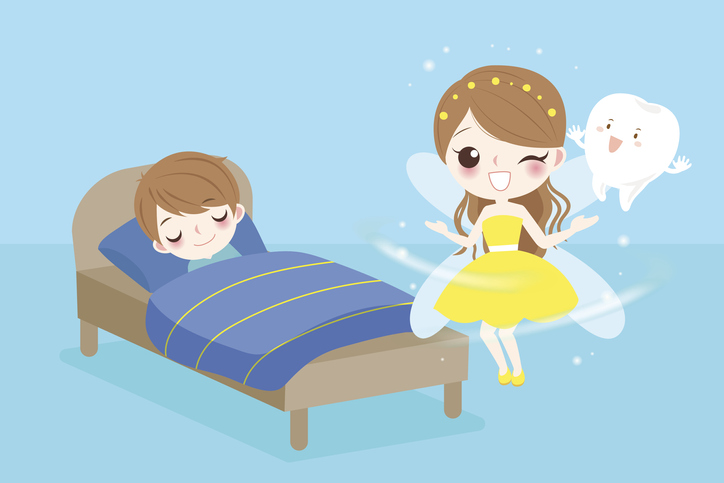Here’s your first Tooth Fairy fact: She (or he, at the BRI, we’re woke) isn’t real. We hate to be the ones to tell you but it was your parent who put money under your pillow when you lost a tooth. Here’s some more trivia about this beloved, dental-obsessed mythological magical creature.
Origin story
The likely mother origin of the entire idea of the Tooth Fairy is probably the thousand-year-old tand-fé, or “tooth fee.” In the 13th century, the written record of Norse traditions called the Eddas talks about this concept, where parents would give their child a nominal sum of money as a gift when they lost their first tooth, signaling the (slow) transition into adulthood. There was no magical fairy, but if your dad was a Norse warrior, he’d hang your lost teeth on a string around his neck, thought to be a good luck charm in war.
Burning teeth
The Middle Ages and Medieval era were time rife with superstitions people came up with to make sense of this bewildering world. In England at these times, children had to burn their own baby teeth — otherwise when they died, they’d be cursed to spend all of eternity looking for those lost chompers. Why burn them? Because of witches, of course. People thought that if you left your teeth around where people could find them, a witch could and would snag them and use them to exert total control over you.
Le Petite Souris (the little mouse)
In 17th century France, kids got a prize for a newly freed tooth, but only the sixth one. Instead of a fairy, Le Petite Souris (the little mouse) would take it away in the night and leave a small gift. (A similar tradition persists in Spain and Latin America, but the rodent is named Ratoncito Perez.) Why a mouse? Historians think it’s because of the unique nature of rodent teeth — they keep growing for the animal’s entire lifespan.
First mention in print
It’s unclear exactly who came up with the idea of a Tooth Fairy (or why), but it couldn’t have been too much before the first time the concept was mentioned in print. In 1908, the Chicago Daily Tribune’s “Household Hints” suggests it as a way for mothers to help children deal with the trauma of missing a tooth. (All the familiar elements are there, including the placement of the tooth under the pillow at bedtime.) The columnist’s suggested price per tooth: 5 cents.
Tooth inflation
Inflation is a killer. Since 2005 or so, the average amount that the Tooth Fairy leaves per tooth has fluctuated between about $1.50 and $2.50. The times when it’s higher is directly tied to the health of the economy — when it’s stronger, kids get more.
Man or woman?
According to surveys, 75 percent think the Tooth Fairy is a woman, while 12 percent say the being is neither gender.








